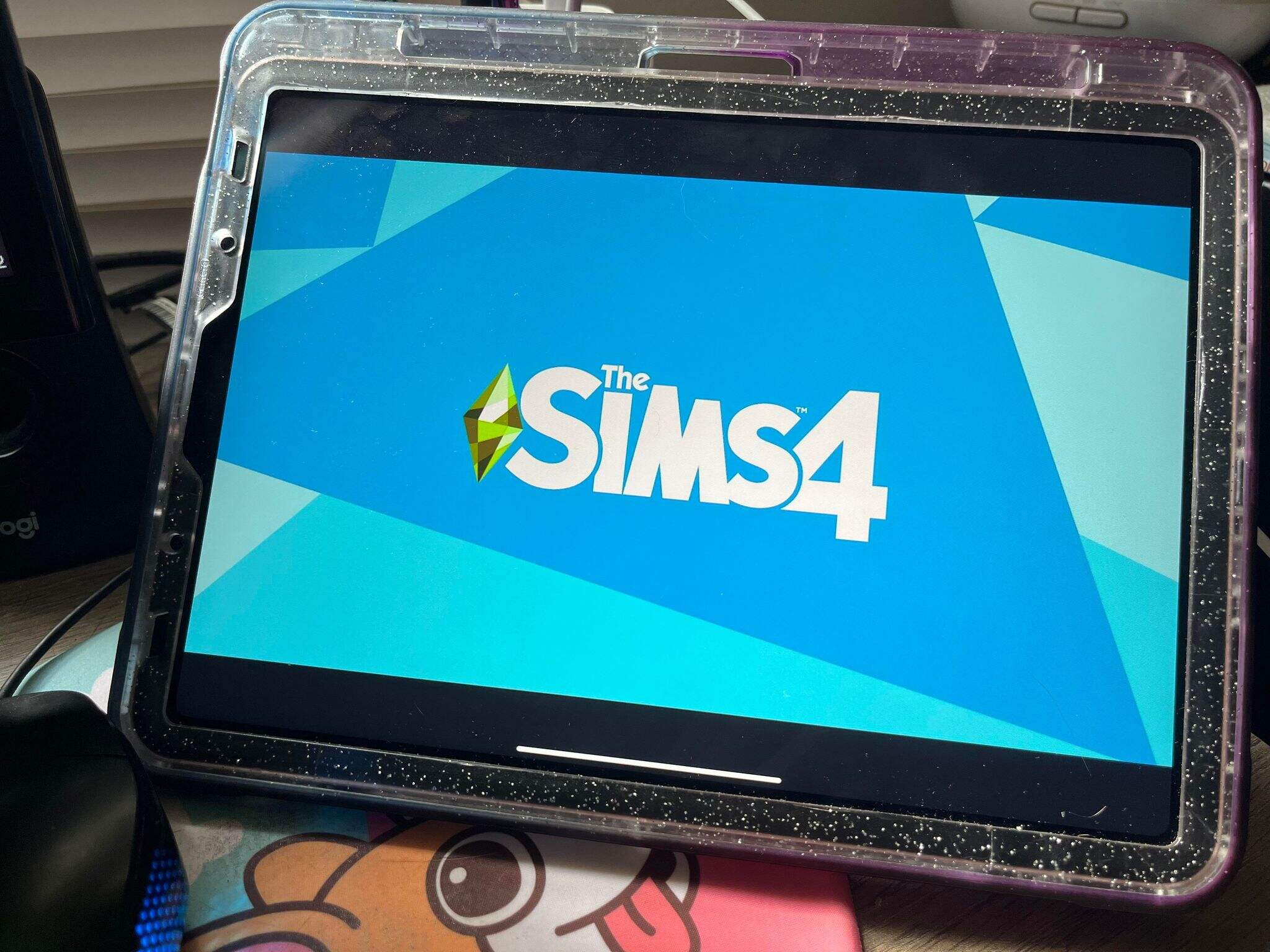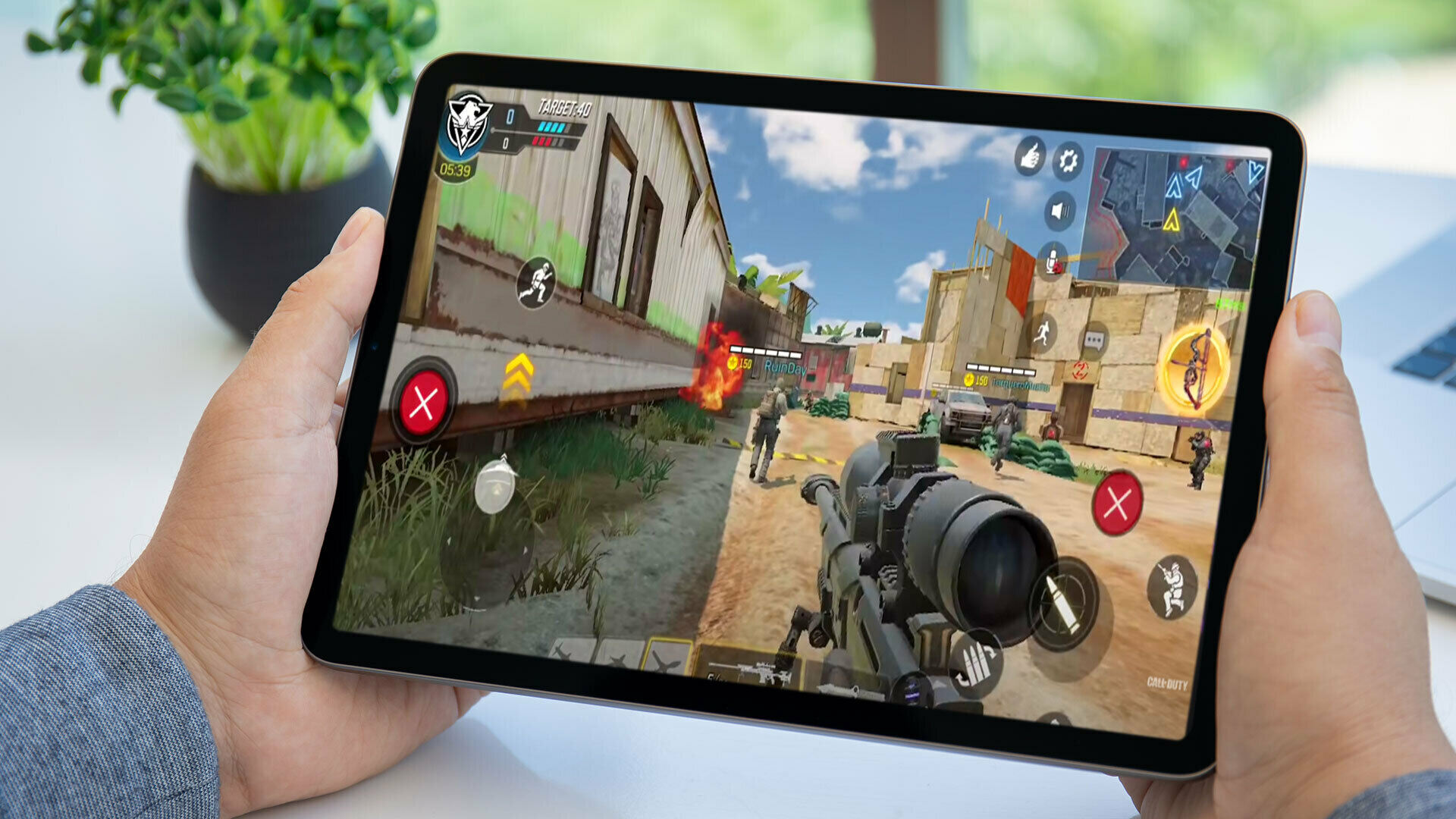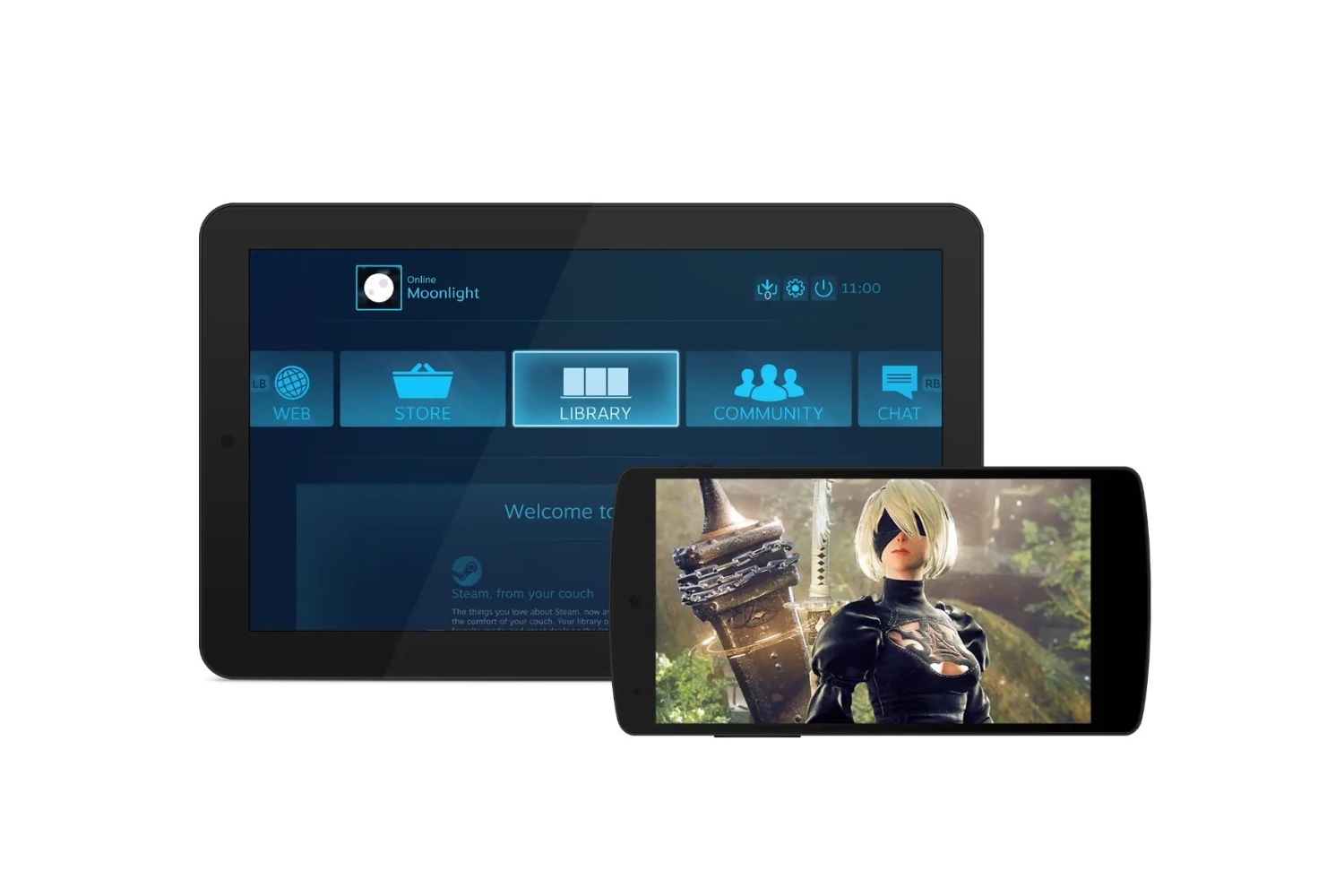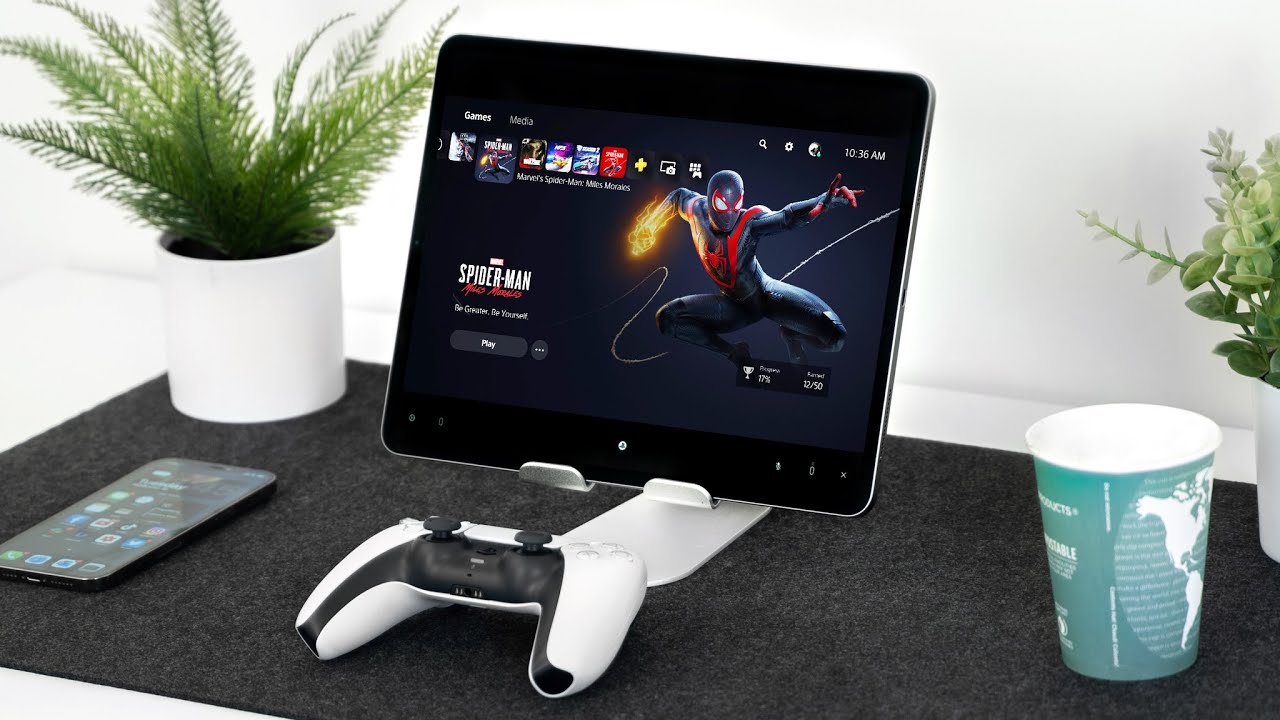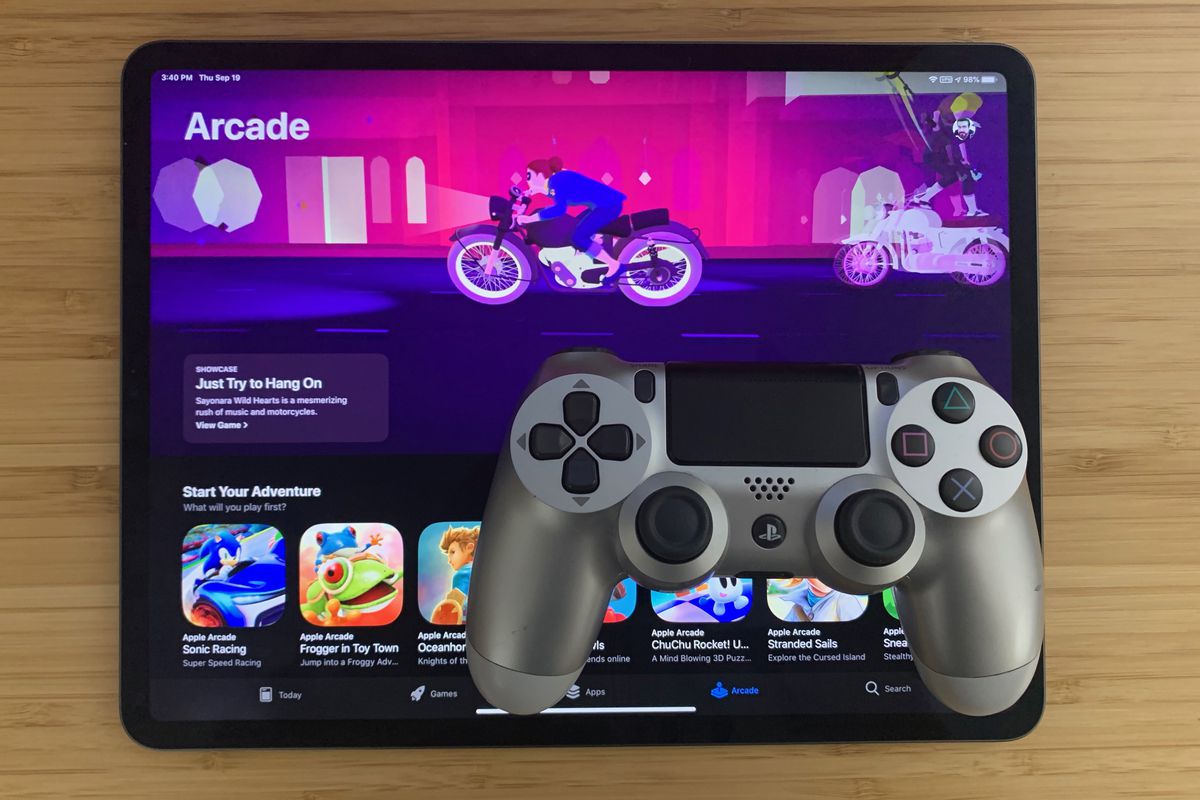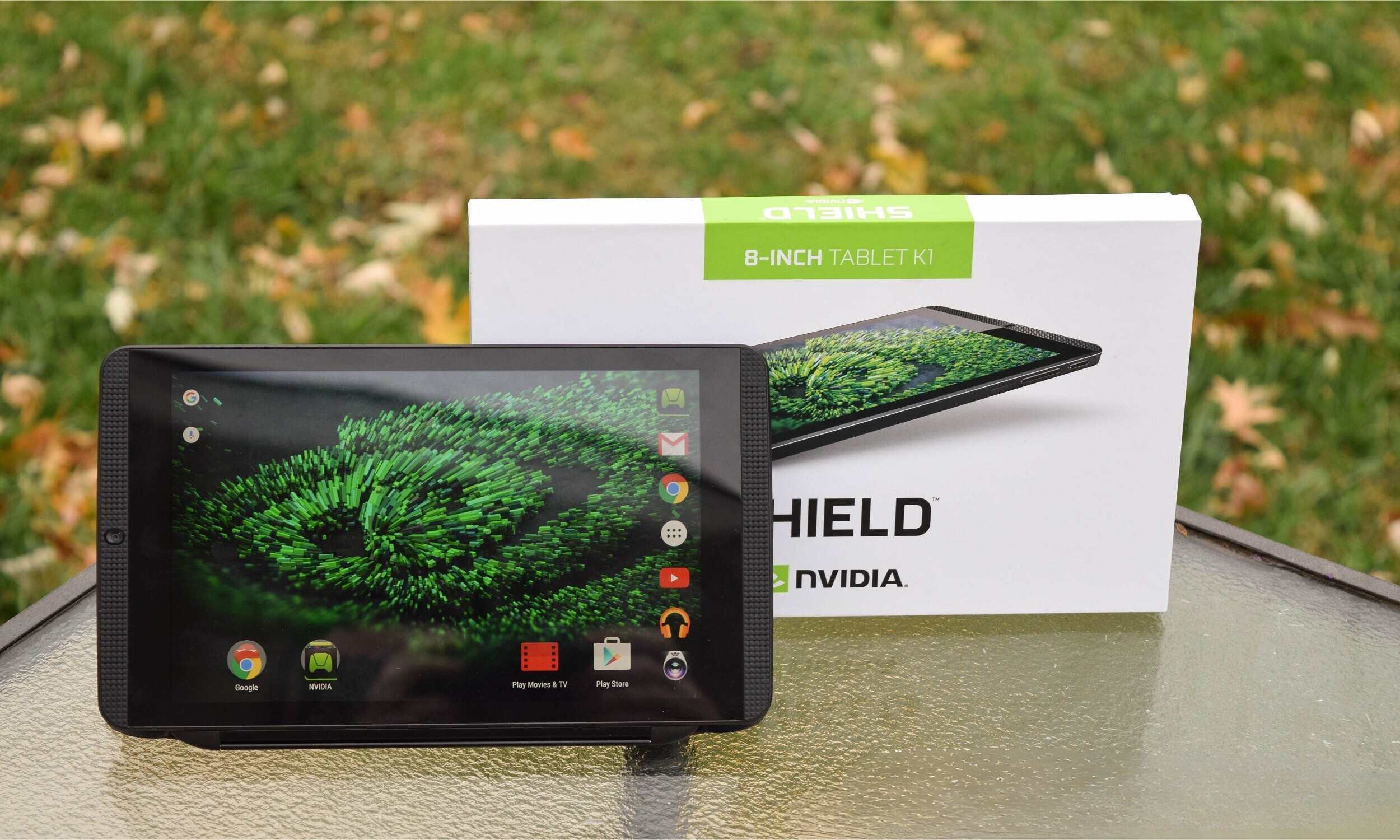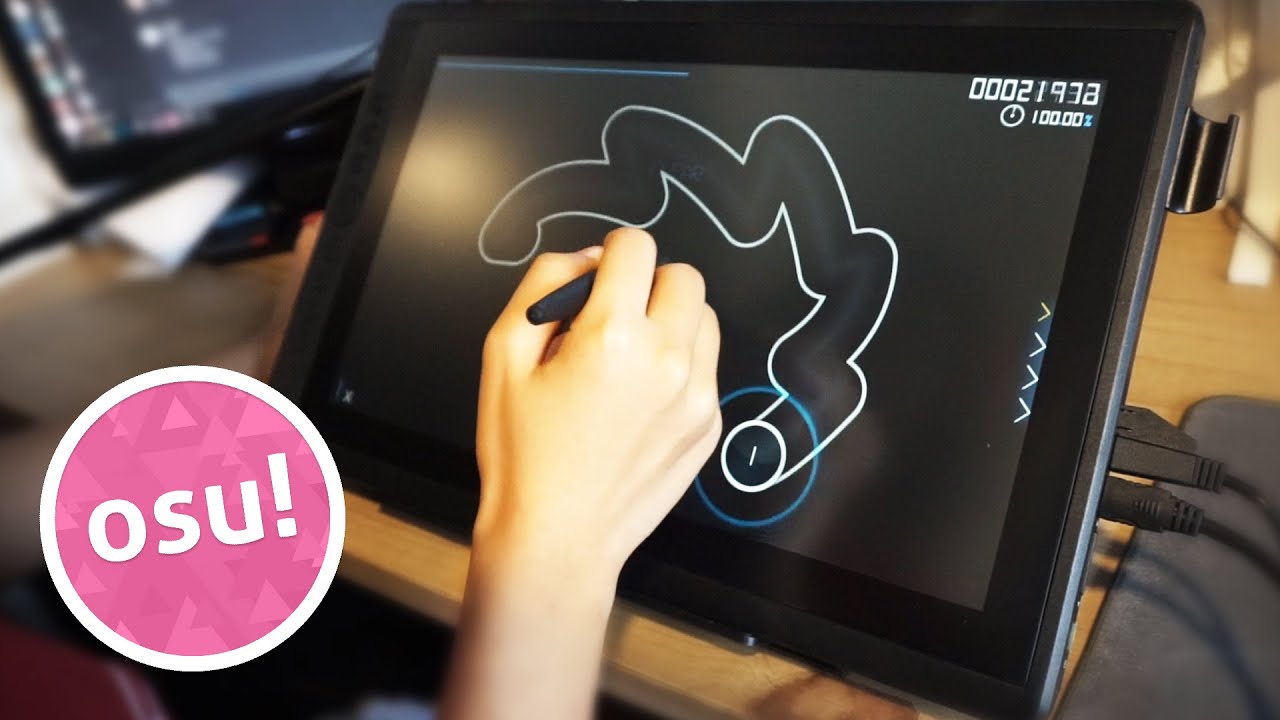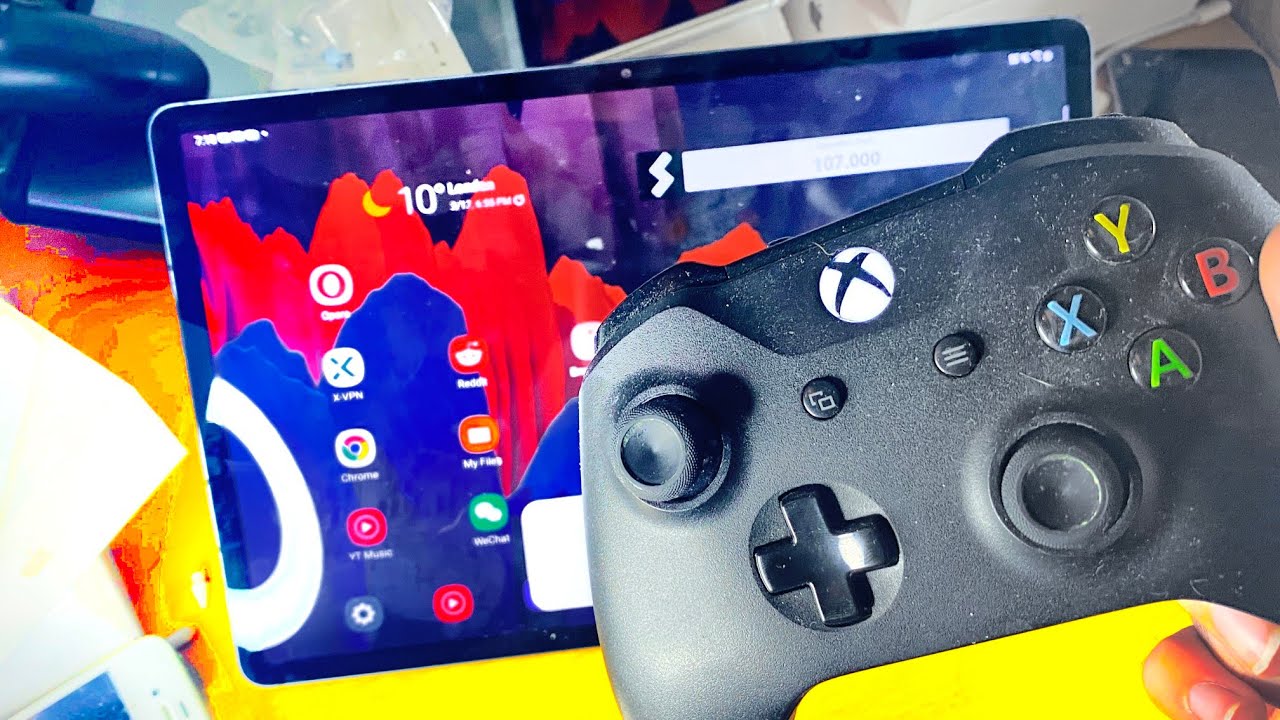Introduction
Welcome to the exciting world of game development on tablet devices! With the growing popularity and widespread use of tablets, creating games for these platforms has become a rewarding and accessible endeavor. Whether you are a seasoned developer or a beginner looking to dive into game creation, this guide will provide you with the essential steps to make a game on a tablet. By following these steps, you will be able to unleash your creativity and bring your unique game ideas to life.
Tablets offer a dynamic and immersive experience for gamers, providing a touch interface, stunning graphics, and versatile gameplay options. With games being the most popular app category on tablets, it’s no wonder that many aspiring developers are drawn to this platform. The ability to create interactive and engaging games on tablets opens up a world of possibilities for both entertainment and learning.
Before we dive into the technical aspects of game development, it’s important to note that making a successful game requires a combination of creativity, problem-solving skills, and a thorough understanding of the target audience. It’s not just about the coding and design; it’s about creating an experience that captivates and engages players.
In this guide, we will explore the key steps involved in making a game on a tablet. We’ll start with the initial planning phase, where you’ll define the concept, target audience, and game mechanics. From there, we’ll move on to designing the characters, creating the game environment, and programming the game logic. We’ll also cover important aspects like adding interactions and controls, incorporating audio and visual effects, and testing and debugging your game to ensure a smooth user experience.
Finally, we’ll discuss the process of publishing your game, making it available to tablet users around the world. We’ll provide useful tips and strategies to help you market and promote your game to maximize its reach and success.
So, whether you have a specific game idea in mind or are simply curious about the game development process, this guide will serve as a valuable resource to help you make a game on a tablet. Let’s get started and embark on this exciting journey of creativity and innovation!
Getting Started
Before you begin creating your game on a tablet, there are a few essential steps to take to ensure a smooth and productive development process.
1. Choose a Game Development Platform: There are several game development platforms available that cater specifically to tablet devices. Research and choose a platform that aligns with your preferred programming language and development tools.
2. Familiarize Yourself with the Tablet’s Capabilities: Tablets have unique features and capabilities, such as touch controls, accelerometer, and multi-touch gestures. Take the time to understand and utilize these features to create a more immersive gaming experience.
3. Set Clear Goals and Objectives: Define the purpose and objective of your game. Consider the target audience, gameplay mechanics, and overall experience you want to deliver. This will guide your development process and ensure a cohesive and engaging game.
4. Gather Resources: Assemble the necessary tools and assets for your game development, including graphic design software, programming libraries, sound effects, and other media. Having these resources ready will streamline the development process.
5. Create a Development Timeline: Break down your game development into smaller, manageable tasks and set realistic deadlines. This will help you stay organized and ensure that you make consistent progress.
6. Collaborate and Seek Feedback: Game development is often a collaborative process. Engage with other developers, artists, and testers to gain valuable insights and improve your game. Don’t be afraid to seek feedback and iterate based on suggestions.
7. Stay Inspired and Play Games: Immerse yourself in the world of gaming. Play different games, analyze their mechanics, and draw inspiration from successful titles. This will fuel your creativity and help you create a unique and engaging gaming experience.
8. Start Small: It’s natural to have grand ideas, but for your first tablet game, start with a smaller, more manageable scope. This will allow you to gain experience and learn the intricacies of tablet game development.
By following these steps, you’ll have a solid foundation to kick start your tablet game development journey. Remember, the key is to stay focused, patient, and open to learning throughout the process!
Planning Your Game
The planning phase is a crucial step in making a game on a tablet. It’s important to define your game’s concept, mechanics, and target audience to ensure a focused and successful development process.
1. Define the Game Concept: Start by brainstorming and refining your game idea. What genre or theme does your game fall into? Is it an action-packed adventure, a puzzle game, or a strategy-based simulation? Clearly defining the concept will guide your decision-making throughout the development process.
2. Identify the Target Audience: Determine who your game is meant for. Consider factors such as age group, interests, and skill level. Tailoring your game to a specific audience will help you make design and gameplay choices that resonate with your target players.
3. Outline Game Mechanics: Decide on the core mechanics and gameplay elements that will make your game engaging and enjoyable. Think about how players will interact with the game, what challenges they will face, and any unique features or abilities that will set your game apart.
4. Create a Story or Narrative: If your game will have a storyline, develop it further during the planning phase. Define the characters, settings, and plot to create an immersive and compelling experience for players.
5. Sketch the User Interface (UI): Design a rough sketch of the game’s user interface, including menus, buttons, and displays. This will give you a visual representation of how the game will look and help you plan for a user-friendly and intuitive interface.
6. Set Gameplay Goals and Progression: Determine the objective of your game and how players will progress through levels or stages. Outline the difficulty curve and any rewards or achievements players can earn, providing a sense of accomplishment and motivation to keep playing.
7. Consider Monetization Strategy: If you plan to monetize your game, explore different options such as in-app purchases, ads, or a premium pricing model. Align your monetization strategy with your target audience and gameplay experience to maximize revenue potential.
8. Create a Development Roadmap: Break down the development process into smaller tasks and create a timeline for each stage. Establish milestones and deadlines to keep yourself organized and track progress effectively.
By thoroughly planning your game, you set the foundation for a focused and successful development process. It will guide your decision-making, reduce potential roadblocks, and ensure that your final product aligns with your vision and resonates with your target audience.
Designing Your Characters
One of the most important aspects of creating a captivating game on a tablet is designing memorable and engaging characters. Characters are the heart of your game and play a vital role in drawing players into the game world. Here are some key steps to consider when designing characters for your tablet game.
1. Define Character Roles: Determine the roles and functions each character will play in the game. Are they the main protagonist, a helpful companion, or a challenging enemy? Defining these roles will help you create distinct personalities and abilities for each character.
2. Visual Style and Art Direction: Establish a visual style or art direction for your characters that aligns with the overall theme and tone of your game. Decide whether you want a cartoonish, realistic, or stylized look and ensure consistency in the art style across all characters.
3. Character Traits and Personality: Give each character unique traits and personalities that make them relatable and interesting. Consider their backstory, strengths, weaknesses, and motivations. This will add depth and nuance to your characters, making them more engaging for players.
4. Balance and Diversity: Aim for a balance of different character types. Include a mix of genders, races, body types, and personalities to ensure diversity and reflect the real world. This allows players to connect with characters who resonate with them.
5. Character Progression: Consider how characters will evolve and grow throughout the game. Will they acquire new abilities or unlock upgrades? Design their progression in a way that keeps players engaged and invested in their development.
6. Animation and Movement: Plan out the animations and movement of your characters to make them visually appealing and lifelike. Smooth and fluid animations add realism and immersion to the game experience.
7. Interactive Elements: Determine how characters will interact with the game environment, other characters, and the player. Will they have dialogue, perform actions, or provide valuable information? These interactive elements enhance the player’s connection and engagement with the characters.
8. Playtesting and Feedback: Once you have designed your characters, engage in playtesting, and gather feedback from players or a focus group. It will help you identify any design flaws, inconsistencies, or improvements needed to enhance the characters’ overall appeal and functionality.
Remember, designing characters is not just about their appearance; it’s about creating memorable, multi-dimensional personalities that players can connect with throughout their gaming experience. By putting careful thought and attention into character design, you’ll bring your game to life and deepen player engagement.
Creating the Game Environment
The game environment is an essential element in creating an immersive and engaging experience for players. It sets the stage for the gameplay and contributes to the overall atmosphere of your tablet game. Here are some key steps to consider when creating the game environment.
1. Determine the Setting: Decide on the setting and location for your game. Will it be a futuristic city, a mystical forest, or an underwater world? Choose a setting that aligns with your game’s concept and enhances the gameplay experience.
2. Sketch the Layout: Start by sketching a rough layout of the game environment. Plan the different areas, obstacles, and pathways that players will navigate through. This will serve as a blueprint for designing and building the actual environment.
3. Develop the Atmosphere: Consider the mood and atmosphere you want to create within the game environment. Will it be eerie and mysterious, or bright and vibrant? Utilize color palettes, lighting effects, and sound design to enhance the desired atmosphere.
4. Design Interactive Objects: Populate the game environment with interactive objects that players can interact with and use to progress in the game. These objects can include platforms, levers, keys, or collectibles. Make sure the placement and functionality of these objects align with the gameplay mechanics.
5. Create Level Design: Break down the game environment into different levels or stages, each presenting unique challenges and puzzles for the player. Consider the difficulty progression and ensure a balanced and engaging level design.
6. Implement Background Art: Create visually appealing background art that complements the game environment. This can include landscapes, cityscapes, or detailed backdrops that add depth and richness to the overall visuals.
7. Use Parallax Effects: Incorporate parallax scrolling to add a sense of depth and movement to the game environment. This technique involves creating multiple layers of background elements that move at different speeds, creating a visually dynamic effect.
8. Test the Gameplay: Playtest the game environment to ensure that it provides a smooth and enjoyable gameplay experience. Test for any glitches, obstacles, or design inconsistencies that may hinder player progress or engagement.
Creating a compelling game environment is crucial in immersing players into your tablet game. By paying attention to the setting, atmosphere, interactivity, and overall design, you will create an environment that captures the imagination and keeps players coming back for more.
Programming the Game Logic
Programming the game logic is a critical step in bringing your tablet game to life. It involves writing the code that controls the behavior of game elements, implements gameplay rules, and enables interaction between the player and the game. Here are some key steps to consider when programming the game logic.
1. Choose the Right Programming Language: Select a programming language that is compatible with the game development platform you are using. Popular choices for tablet game development include C#, C++, and JavaScript.
2. Break Down the Game into Components: Divide the game logic into logical components such as player control, enemy AI, collision detection, scoring, and game states. This modular approach makes the code more manageable and easier to debug.
3. Implement Player Controls: Write the code to handle player input and control the character’s movement, actions, and abilities. Consider touch gestures, virtual buttons, or accelerometer-based controls depending on your game’s requirements.
4. Create Artificial Intelligence (AI): If your game involves non-player characters (NPCs), implement AI algorithms to control their behavior and decision-making. Design the AI logic to make the NPCs react to the player’s actions and create believable and challenging opponents.
5. Implement Game Mechanics: Write code to enforce and maintain the game mechanics you planned during the planning phase. This includes tracking scores, managing levels, implementing timers, and handling game events.
6. Include Collision Detection: Implement collision detection algorithms to ensure that objects interact correctly in the game environment. This includes detecting collisions between the player and obstacles, enemies, or collectibles.
7. Integrate Game Physics: If your game requires realistic physics simulation, incorporate physics engines or write custom code to handle gravity, object movements, and collisions based on physical properties.
8. Debug and Test Continuously: Test and debug your game logic continuously to identify and fix any issues or bugs. Use debugging tools, logging, and testing on different devices to ensure smooth gameplay and a seamless user experience.
Programming the game logic allows you to bring your game concept to life. It’s essential to adopt clean coding practices, write efficient algorithms, and ensure proper error handling. By investing time and effort into programming the game logic, you will create a robust and enjoyable gaming experience for your players.
Adding Interactions and Controls
Adding interactions and controls to your tablet game is a crucial step in creating an immersive and engaging experience for players. It involves designing and implementing intuitive and responsive controls that allow players to interact with the game world. Here are some key steps to consider when adding interactions and controls to your tablet game.
1. Define the User Interface (UI) Elements: Determine the UI elements needed to provide players with control and information during gameplay. This may include virtual buttons, sliders, menus, or touch gestures like tapping, swiping, or pinching.
2. Implement Touch Controls: Write the code to handle touch input, allowing players to interact with the game by tapping, dragging, or multitouch gestures. Ensure that the touch controls are responsive and accurately translate the player’s actions.
3. Adapt the Controls for Different Screen Sizes: Consider the various screen sizes and orientations of tablets. Design the controls to be adaptable and responsive, ensuring they work well on both smaller and larger screens.
4. Test the Controls: Continuously playtest and iterate on the controls to ensure they are intuitive and easy to use. Solicit feedback from players or a focus group to identify any areas of improvement or potential issues.
5. Implement Game Interactions: Write the code for interactions between game objects and the player. This can include object interactions, picking up items, triggering events, or engaging in combat. Ensure that the interactions are responsive and provide visual or audio feedback to the player.
6. Add In-Game Menus and Navigation: Implement menus that allow players to navigate between different game screens, access settings, or pause the game. Design the menus to be user-friendly, visually appealing, and responsive to touch input.
7. Incorporate Feedback and Notifications: Use sound effects, visual cues, or vibration to provide feedback and notifications to the player. This can include indicating successful interactions, displaying score updates, or alerting the player to important events.
8. Consider Accessibility: Ensure that your game is accessible to players with different abilities. Provide options for adjusting controls, font size, or color contrast to accommodate a wide range of players.
Adding interactions and controls to your tablet game is a critical aspect of creating a seamless and engaging gameplay experience. By designing intuitive controls, implementing responsive touch input, and incorporating well-designed UI elements, you will enhance player immersion and enjoyment.
Incorporating Audio and Visual Effects
Audio and visual effects play a crucial role in enhancing the immersion and overall experience of your tablet game. They add depth, dynamism, and emotional impact to the gameplay. Incorporating compelling audio and visual effects is vital to creating an engaging and memorable gaming experience. Here are some key steps to consider when adding audio and visual effects to your tablet game.
1. Sound Design: Create or source high-quality sound effects and music that complement the gameplay and ambiance of your game. Consider the different audio elements such as background music, character sounds, environment sounds, and special effects.
2. Implement Sound Cues: Trigger sound cues at specific events or actions in the game. These can include footsteps, weapon sounds, or ambient noises, enhancing the realism and immersiveness of the game world.
3. Dynamic Audio: Implement dynamic audio systems that adjust the volume, pitch, or other audio parameters based on in-game conditions. This can include fading in or out depending on the player’s actions or transitioning between different music tracks seamlessly.
4. Visual Effects: Utilize visual effects techniques to enhance the visual impact of your game. This can include particle effects, lighting effects, weather effects, and environmental animations that add realism and visual interest to the game world.
5. Animation and Motion: Ensure that character animations and movements are smooth, fluid, and visually appealing. Create animations for actions like running, jumping, or attacking that convey a sense of realism and enhance the player’s connection to the characters.
6. User Interface (UI) Effects: Add visual effects and animations to the user interface elements such as buttons, menus, and notifications. This makes the UI more engaging and visually pleasing for the player.
7. Visual Feedback: Use visual cues and feedback to communicate to the player important events, actions, or transitions in the game. This can include highlighting objects of interest, showing progress or level completion, or indicating successful interactions.
8. Test and Optimize: Test the audio and visual effects in different scenarios and on different devices to ensure they work as intended and do not impact performance. Optimize the effects to strike a balance between visual appeal and efficient resource usage.
Incorporating audio and visual effects is crucial in creating a captivating and immersive gaming experience on a tablet. By paying attention to sound design, visual effects, and animations, you will elevate the overall quality of your game and provide players with a truly immersive and engaging experience.
Testing and Debugging Your Game
Testing and debugging your tablet game is a crucial step in ensuring its functionality, performance, and overall user experience. Thorough testing allows you to identify and fix any issues, glitches, or gameplay imbalances before the game reaches the hands of players. Here are some key steps to consider when testing and debugging your game.
1. Functional Testing: Conduct thorough testing of all game features and functionalities. Ensure that all interactive elements, controls, and game mechanics work as intended and respond appropriately to user input.
2. Playtesting with Different Devices: Test your game on various tablet devices to ensure compatibility and performance across different screen sizes, resolutions, and operating systems. This helps identify any potential hardware-specific issues or inconsistencies.
3. Performance Testing: Assess the game’s performance by monitoring its frame rate, load times, and memory usage. Optimize the code and assets to achieve smooth gameplay and minimal resource consumption.
4. Usability Testing: Conduct usability tests to gather feedback from users on the game’s intuitiveness, ease of navigation, and overall user experience. Identify areas where players could encounter confusion or frustration and iterate on the design accordingly.
5. Test for Edge Cases: Consider and test scenarios that may occur under unusual or unexpected circumstances, such as low battery, interruptions, or network connectivity issues. Ensure that the game handles these situations gracefully without crashing or losing critical data.
6. Regression Testing: After making changes or fixing bugs, perform regression testing to ensure that the new modifications did not introduce new issues or break any previously working functionality.
7. Gather Feedback: Solicit feedback from beta testers, focus groups, or early adopters to gain insights into the game’s strengths and weaknesses. Use this feedback to improve or refine the game before its official release.
8. Debugging: Use debugging tools and techniques to identify and resolve any existing bugs or issues. Analyze error logs, stack traces, and user-reported issues to pinpoint the root causes of problems and apply appropriate fixes.
Thorough testing and debugging are key to delivering a high-quality and enjoyable gaming experience. By diligently testing your tablet game, addressing any bugs or performance issues, and incorporating player feedback, you can ensure that your game is polished, stable, and ready for players to enjoy.
Publishing Your Game
Once you have completed the development and testing of your tablet game, the next step is to publish it and make it available to a wide audience. Publishing your game requires careful preparation and consideration of various factors. Here are some key steps to follow when publishing your tablet game.
1. App Store Research: Research different app stores and platforms where you can publish your game. Consider factors such as user base, distribution reach, revenue sharing models, and developer guidelines.
2. App Store Guidelines: Familiarize yourself with the guidelines and rules of the app store you choose. Ensure your game complies with these guidelines in terms of content, branding, monetization, and any other requirements.
3. Asset Preparation: Prepare all necessary assets for publishing your game, including app icons, screenshots, promotional images, and descriptive text. Create compelling and visually appealing assets that accurately represent your game.
4. App Store Submission: Follow the submission process outlined by the app store. Prepare all required information, metadata, and screenshots, and adhere to any specific file size and format guidelines.
5. App Store Optimization (ASO): Optimize your game’s listing in the app store to maximize its visibility and discoverability. Use relevant keywords, appealing descriptions, and attractive visuals to attract potential players.
6. Marketing and Promotion: Develop a marketing strategy to promote your game and generate buzz. Utilize social media, influencers, press releases, and other promotional channels to reach your target audience and build anticipation for your game.
7. Collecting Player Feedback: Encourage players to provide feedback and reviews on the app store and other platforms. Monitor and respond to player feedback promptly, addressing any concerns or issues that may arise.
8. Updates and Maintenance: Continuously support and update your game with bug fixes, performance enhancements, and new features based on player feedback and your own development roadmap. Regular updates keep your game relevant and show commitment to the player community.
Remember, publishing your game is just the beginning of your journey. It’s essential to actively engage with players, gather feedback, and improve your game over time to ensure its long-term success.
Conclusion
Congratulations on completing the journey of making a game on a tablet! Throughout this guide, we have covered the essential steps and considerations involved in developing and publishing a tablet game. From the initial planning phase to testing, debugging, and finally publishing your game, you have gained valuable insights into the game development process.
Designing and creating a game on a tablet can be an exciting and rewarding experience. It allows you to showcase your creativity, technical skills, and passion for gaming. By following the steps outlined in this guide, you have learned how to define your game concept, design immersive characters and environments, implement intuitive controls, incorporate audio and visual effects, and publish your game to make it accessible to a wide audience.
Remember, the journey doesn’t end here. As a game developer, continuous learning, improvement, and engagement with your player community are key. Stay updated with industry trends, gather feedback, and iterate on your game to provide the best possible user experience.
Creating a successful tablet game requires a combination of technical expertise, creative vision, and a deep understanding of your target audience. It is a time-consuming process that requires patience, dedication, and the ability to adapt to challenges along the way. But with perseverance and a passion for creating exceptional gaming experiences, you can bring your game to life and captivate players around the world.
Now it’s time to unleash your creativity, embrace the power of tablet devices, and embark on your own unique game development journey. Remember, the possibilities are endless, and with your skill and determination, you can create something truly remarkable. Good luck, and may your tablet game be a resounding success!







